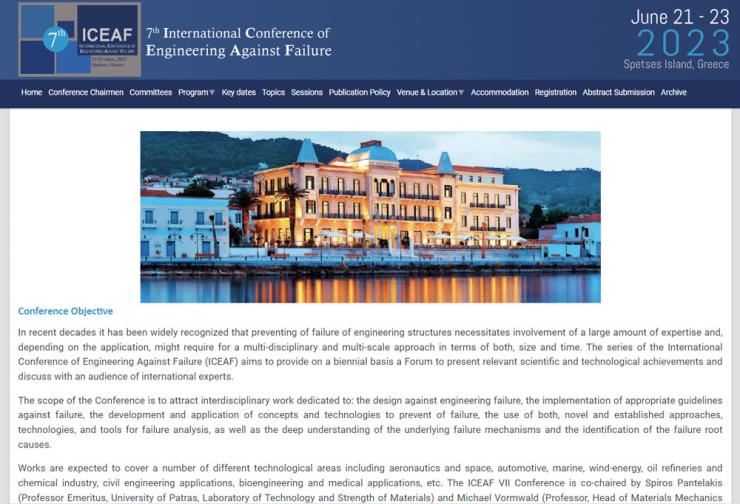Prof. Nikos Melanitis from the Hellenic Naval Academy presents the NAVMAT platform prototype, a naval materials failure management system at the 7th International Conference of Engineering Against Failure, 21-23 June 2023 in Spetses. The application is the key result of a research project funded by the Hellenic Foundation for Research and Innovation and is being developed in cooperation with IIT/Demokritos.
TITLE
NAVMAT: an AI-powered pathway to knowledge sharing on material failures
ABSTRACT
Two years ago, the concept and design of a naval materials failure management system, with the acronym NAVMAT, was announced in ICEAF VI. The current paper describes the product development methodology, the system architecture, the modules and features of the operating prototype, as well as future challenges.
The fundamental compound of the knowledge management platform is the recording and classification of a failure incident. The business process reflected into and supported by the NAVMAT service is described as follows: An incident is identified, described and associated with a component, which is a part of a system, belonging on a platform such as a ship or a vehicle of even an industrial installation. The component is made out of a specific material, following a suitable fabrication method. The failed component (or system) operates in defined environment, being subjected to a loading regime. It exhibits a mode of failure initially identifiable by the observer, but further assessed and analysed only by an expert. Should such a failure analysis take place, the root cause of failure may also be confirmed. The full documentation of the incident and related content is classified and indexed for future reference.
The NAVMAT platform supports different types of users, from the first Reporter to the Analyst and Forensic Engineer through appropriate workflows. In these workflows the provided information can be provided as text, files, images and videos, which can be easily associated to the incident and provide structured information, usable by the NAVMAT system. NAVMAT also supports different security clearance levels to funnel information and access as appropriate, enabling different organizational needs.
NAVMAT provides a number of AI-enabled helpers to facilitate the execution of the above process steps. During the incident recording, NAVMAT brings into play reactive real-time search which suggests related incidents and literature to facilitate the editor. It also speeds up the classification of incidents by providing AI-suggested labels, chosen from the (multi-lingual) concepts contained in the carefully engineered, extensible NAVMAT Ontology. On the other hand, the intelligent indexing and search infrastructure of NAVMAT supports easy identification and retrieval of past incidents, reports and publications, by applying Natural Language Processing to create a complete puzzle of previous knowledge related to a specific incident setting.
The prototype of the described system has been embedded as a web application validated by potential Users and is being prepared for Operation in a fleet environment. At the same time the applicability and adaptation to other industrial sectors is also considered, since the main components of NAVMAT, from the Ontology to the AI models, can be fine-tuned for various industries applicable (e.g. mechanical, electrical, electronic and other settings).
Melanitis N 1, Giannakopoulos G 2, Stamatakis K 2
1 Hellenic Naval Academy, Piraeus, Greece
2 Institute of Informatics & Telecommunications, NCSR Demokritos, Athens, Greece

